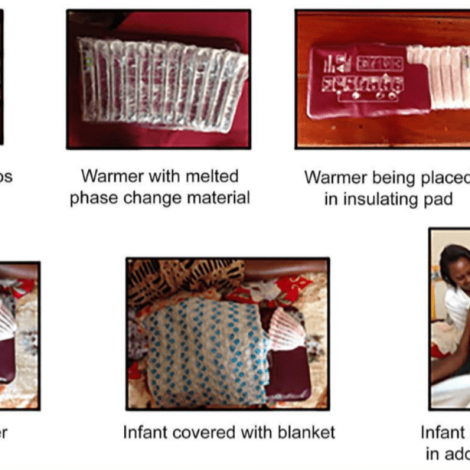Dr. Ashok Gadgil must be tireless in his work to create products that change lives in emerging economies. His name is attached to huge, and hugely influential projects such as UV Waterworks, which disinfects water for five million people in six countries, and fuel-efficient cookstoves used by 20,000 people in Darfur.
The latest project by the Senior Faculty Scientist at Lawrence Berkeley National Laboratory in Berkeley, California (USA), is an infant warmer designed to save the lives of newborns at risk of hypothermia.
For more on Dr. Gadgil | Five Questions for Ashok Gadgil
As described in a study by Nahimana and colleagues published in the journal Public Health Action, December 2018, the warmer contains 12 wax cylinders as a phase change material that, when melted, emit heat at a constant temperature for six hours. At roughly $40, the warmer is less costly than other options.
“Each individual candle holds about 100g of PCM [phase change material]. The construction is double-sleeved to ensure no leakage of PCM over many repeated cycles of heating and cooling… The casing for the PCM is a co-extruded film made with polyethylene and nylon.
The device is “…an easy-to-use, inexpensive, reusable, easily washable, non-electric infant warmer that supports KMC [kangaroo mother care, in which mothers carry infants with skin-to-skin contact]… The infant warmer is modeled on a heating pad made of a PCM that changes from solid to liquid at skin temperature. The mattress is rolled up and placed in an accompanying sturdy, wide-based thermos filled with boiling water, and the PCM is allowed to melt, which happens in approximately 30 min…”
“When needed, the mattress is removed from the water and dried. The temperature of the mattresses is then assessed using a color indicator (liquid crystal thermometer) that clarifies the safe/effective use zone (from 38°C to 35°C)… The mattress is then slipped into an accompanying insulating pad at which time it is ready to use.”
The warmer has been studied by at least two groups of researchers with results published in peer-reviewed literature.
“The first field trial of the Infant Warmer in Rwanda health clinics was held in 2017, though the data took time to analyze, and the papers extensive time to get written, reviewed, and published,” Dr. Gadgil says. “There are two papers recently published resulting from the 2017 Rwanda field tests… There is a more extensive (second) field trial that started in November 2019, and is ongoing. Both are led by Harvard Medical School’s neonatal ICU unit Chief, Prof. Anne Hansen. Berkeley does the engineering side of the work.

